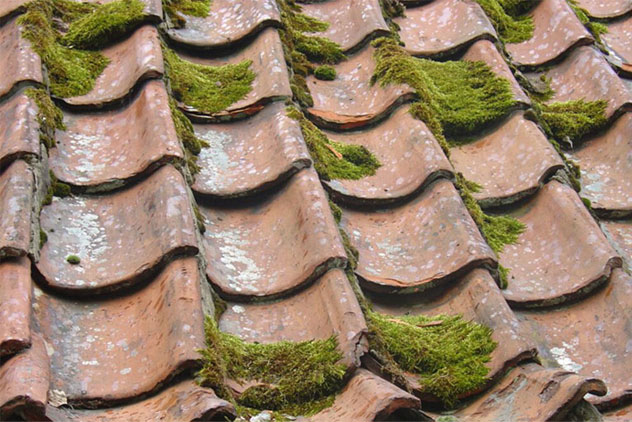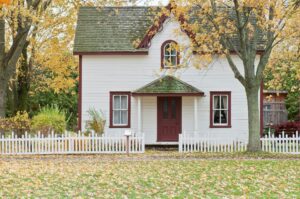Practical Tips to Evaluate Your Roof’s Condition
Few home maintenance questions feel as weighty as deciding whether to repair or replace a roof. Minor damage can often be fixed, saving money in the short term. But when do temporary solutions become a game of whack-a-mole—addressing leaks or missing shingles that keep resurfacing? And how do you gauge if a full replacement is genuinely the better investment?
In this guide, we’ll explore the factors that influence whether a repair will suffice or if it’s time to install a brand-new roof. We’ll cover telltale signs of extensive damage, walk through cost comparisons, and delve into how your roof’s age, materials, and local climate affect the decision. By the end, you’ll have a clearer picture of whether a quick fix is enough—or if you should bite the bullet on a full-scale replacement to protect your home for years to come.
Why This Decision Matters
Your roof does more than keep rain out; it safeguards your entire home. Water damage from a faulty roof can lead to mold, rot, damaged insulation, and even structural issues. Meanwhile, a well-maintained roof can provide peace of mind, enhance curb appeal, and potentially boost resale value.
Repair vs. Replace isn’t a purely financial dilemma, though budget is a critical factor. It also concerns how you use your home, how long you plan to stay there, and whether you want to avoid repeated disruptions from ongoing fixes. Sometimes, an aging roof that needs constant patching can cost you more in the long run—both in cash and stress—than a clean-slate replacement.
Signs Your Roof May Still Be Repairable
Not every leak or missing shingle calls for a total overhaul. Here are scenarios where a targeted repair might do the trick:
- Localized Damage
If a small area has been affected by wind, hail, or falling branches—but the rest of the roof is sound—a spot repair can often restore protection. Replacing a damaged patch of shingles or fixing a section of flashing is cheaper and faster than a whole new roof. - Minor Leaks or Cracks
A single leak around a vent stack, chimney, or skylight often points to issues with flashing or sealant. Provided you haven’t let the leak fester for months, a capable roofer can remove the compromised materials, apply new underlayment, and re-seal effectively. - Sturdy Underlying Structure
Even if a few shingles have blown off, the decking and rafters might still be in great shape. If an inspection reveals no significant rot or water damage in the attic or roof deck, a targeted fix could extend the roof’s lifespan. - Newer Roof Age
If your roof is well under its expected lifespan (e.g., a 10-year-old roof designed to last 25 years), a professional repair can often help you squeeze more years out of it—unless the damage is severe.
For a good visual guide to identifying minor roof damage, This Old House publishes articles and tutorials showing common repairs, from replacing a few shingles to patching small leaks.
Telltale Signs It’s Time for Replacement
Conversely, certain problems indicate that partial fixes might only prolong the inevitable, or worse—lead to even bigger issues down the line:
- Widespread Shingle Deterioration
If you see large areas of curling, buckling, or broken shingles, or you’re frequently finding shingle granules in your gutters, it’s a sign the materials are nearing the end of their life. - Sagging Roofline
A drooping or sagging roof can point to structural issues, such as rotting decking or even failing rafters. Repairs won’t address deep-seated rot or compromised framing; a full tear-off and rebuild is usually necessary. - Extensive Water Damage or Mold
Once water soaks through the decking and into the attic insulation or structural elements, it often means repeated leaks or neglected maintenance. At this stage, patch jobs won’t stop the underlying decay or potential mold growth. - Roof Approaching or Surpassing Its Lifespan
Most asphalt shingles last around 20–30 years, while metal can last 40–70. If you’re close to or beyond those thresholds—and experiencing multiple leaks—replacing the roof might be the more cost-effective solution long term. - Frequent Repairs Already
If you’ve already patched several leaks in different areas, the cumulative cost of ongoing fixes may quickly catch up to a full roof replacement. Constant “band-aid” repairs also raise the risk that unseen water damage is worsening beneath the surface.
On the whole, these telltale signs rarely improve with patchwork fixes. When shingles are severely compromised or moisture has infiltrated deep into the roof’s decking, short-term solutions can leave hidden problems unchecked.
Rather than funneling resources into repeated repairs, a full replacement often proves more economical and protective in the long run—especially if your roof is well past its typical lifespan or showing multiple trouble spots at once.
Cost Considerations
Upfront Repair vs. Long-Term Spending
Repairs typically cost less than a replacement in the short run. But if your roof is nearing the end of its service life, repeated patches can add up. Factor in potential property damage from undetected leaks and the possibility of needing a replacement soon anyway. Sometimes, doing a replacement earlier can save money overall, especially if your roof’s issues aren’t just cosmetic.
Material Variations
Replacing a simple asphalt shingle roof generally ranges from $5,000 to $12,000 for an average home, while metal can be $10,000 to $20,000 or more. Repairs, on the other hand, might be a few hundred to a couple thousand dollars, depending on the scale. If you have pricier materials like slate or tile, repairs can get expensive quickly—pushing you closer to replacing the roof altogether if damage is widespread.
Financing Options
Many homeowners overlook financing for larger roof replacements. Some roofing companies partner with lenders to offer payment plans or low-interest financing. If your damage stems from a covered event (like hail or wind under homeowners insurance), your out-of-pocket cost may shrink. Keep in mind you may still owe a deductible, and coverage depends on your policy terms. If you do choose to finance, calculate total interest and monthly payments to ensure you’re making a sustainable choice.
Roof Age and Expected Lifespan
A crucial factor in deciding repair vs. replace is your roof’s age relative to its expected lifespan. For instance:
- Asphalt Shingles: Usually last around 20–30 years, depending on quality and maintenance.
- Metal Roofing: Can last 40–70 years with proper care, sometimes even longer for premium metals like copper.
- Wood Shakes: Often 20–40 years, though they require diligent maintenance in wet or humid climates.
- Slate or Clay Tiles: Often surpass 50 years, but cracks or broken tiles can lead to water infiltration if ignored.
If your roof is under five years old and experiences moderate damage (like a tree branch strike in one area), a repair is typically worthwhile. But if you have an asphalt shingle roof that’s 25 years old and you’re dealing with multiple leaks, you risk throwing money at a roof that may only last another couple of years at best.
Local Climate and Environmental Factors
Your region’s weather can push you toward one option or the other:
- High-Wind or Hurricane Zones
A roof with multiple damaged sections after strong storms might be more vulnerable if it’s already a decade or two old. Replacing the roof with a wind-resistant system could save future repairs. - Snowy, Cold Climates
If you’re dealing with frequent ice dams and leaks in winter, a patch might not address the root cause—lack of insulation or inadequate ventilation. A new roof with improved underlayment and ventilation might be the long-term fix. - Hot, Sunny Areas
Roofs in scorching climates degrade faster unless they have reflective coatings or specialized materials. If your asphalt shingles are repeatedly curling, a more heat-resistant system (like metal or advanced asphalt shingles) might be worth installing outright. - Humid or Rain-Heavy Regions
Persistent algae, mold, or rot might point to fundamental design issues that a repair can’t solve—like poor attic airflow or substandard underlayment. In such cases, a fresh start allows you to fix these design flaws.
For climate-specific roofing strategies, Buildings.com offers articles and case studies on how different materials fare under various weather conditions.
The Inspection Process
An experienced roofer’s inspection is your best bet for an informed decision. During an inspection, they’ll:
- Check Shingle Condition: Look for curling, cracking, or granule loss.
- Assess Flashing and Seals: Inspect areas around vents, chimneys, and skylights.
- Peek in the Attic: Spot water stains, mold, or soggy insulation that hints at underlying leaks.
- Evaluate Decking and Structure: Press or prod gently for soft spots suggesting rot.
If the roofer flags multiple trouble areas or finds compromised decking, you’re likely leaning toward replacement. Ask for photos or a walkthrough so you can see exactly what they’re seeing.
Repair-First Approach: Pros and Cons
Pros
- Lower Immediate Cost
You spend less money upfront and can address the most pressing issues. - Less Disruption
A repair usually takes hours, not days, so there’s minimal interference with daily life. - Useful for Localized Damage
Small leaks or damage confined to a single area make sense to fix instead of overhauling the entire roof.
Cons
- Potentially Temporary
If underlying issues remain—like aging materials or structural decay—repairs might only buy time. - Higher Lifetime Cost
Repeated fixes can exceed the cost of a full replacement if the roof is nearing its lifespan. - Risk of Hidden Damage
Focusing only on visible trouble spots can overlook deeper water infiltration or rotted decking.
Replace-Now Approach: Pros and Cons
Pros
- Fresh Start
A new roof tackles all possible weak points at once, often providing a warranty on materials and workmanship. - Longer Lifespan
You reset the clock, so you likely won’t deal with major roofing issues for 20–50 years, depending on the material. - Energy Efficiency
Installing modern, more reflective or insulated materials can reduce heating and cooling costs. - Resale Boost
A brand-new roof can appeal to prospective buyers, potentially justifying a higher sale price if you move soon.
Cons
- Higher Upfront Expense
Even if financing is available, the lump sum can be daunting compared to a smaller repair bill. - Construction Disruption
Tearing off the old roof and installing a new one typically takes days, sometimes longer for large or complex homes. - Overkill for Minor Damage
If your roof truly has decades left, replacing it prematurely might not be financially wise.
Planning and Budgeting
If you’re uncertain about the best path forward, consider these steps:
- Get Multiple Estimates
Consult at least two or three reputable roofing companies. Compare their assessments of damage, recommended solutions, and pricing. - Ask About Material Options
Even if you replace your roof, you might choose a slightly heavier-grade shingle or a different material better suited to local weather. - Weigh Financing and Insurance
Does your homeowner’s insurance cover part of the damage? Are there local incentives for energy-efficient roofs? Could a payment plan help? - Think Long-Term
If you plan to stay in the home for many years, a roof that costs more initially but lasts longer may save hassle and expense later on. If you’re planning to move soon, repairing might suffice to pass inspections.
For a more extensive budgeting guide, Better Homes & Gardens publishes cost comparisons and design ideas that factor into whether you replace or repair.
Maintenance Tips Either Way
Whether you opt for repair or replacement, regular maintenance keeps your roof performing longer:
- Inspect Seasonally: A simple glance or a short walk around your property can reveal new cracks, loose shingles, or debris buildup.
- Clean Gutters: Clogged gutters lead to water pooling at the roof edges, which accelerates decay.
- Trim Overhanging Branches: Falling twigs or constant shade can introduce moisture and moss growth.
- Address Minor Issues Quickly: A single missing shingle can morph into a full-blown leak if ignored.
By staying proactive, you catch small concerns early and reduce the odds of needing more drastic measures.
Making the Call For Your Roof
The question of whether to repair or replace your roof doesn’t have a one-size-fits-all answer. Minor localized damage on a relatively young roof could mean a quick repair is all you need—saving thousands in immediate costs. But if your roof is pushing its expected lifespan or you’re seeing signs of widespread deterioration, a replacement may be the wiser long-term investment, offering a fresh warranty, fewer future headaches, and peace of mind.
Start with a thorough inspection by a qualified roofing contractor. Ask about the condition of your decking, the extent of moisture or rot, and how close you are to the typical expiration date for your roof’s material. Factor in your local weather, your budget, and how long you plan to remain in the home. Whether you choose to fix that leak or go for a brand-new system, the key is to stay informed and proactive—your roof (and your home) will be better for it.




